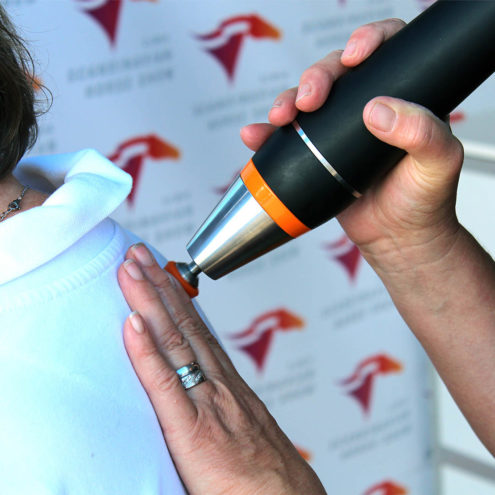Stress fracture of the foot treatment – Marching fracture

Stress fractures of the foot, also known as marching fractures, occur due to repeated overloading. Marching fractures usually affect the metatarsal bones of the foot and if they have occurred in the past, there is a tendency for them to recur.
What causes stress fractures in the foot?
Stress fractures in the foot are caused by repeated overuse, which leads to the foot not having time to recover. This can lead to the formation of small cracks in the bones of the foot, which can then develop into tears or fractures.
Why do you get stress fractures in the foot?
Stress fractures can develop if the foot is subjected to repeated high overload. This can happen during activities such as intense running and long hikes with heavy packs. Hard surfaces and shoes with poor shock absorption also increase the risk of suffering stress fractures in the foot. Sunken arches and stiff calf muscles can also play a role. Those suffering from osteoporosis, eating disorders or hormonal imbalances are at higher risk.
What are the symptoms of a stress fracture of the foot?
Symptoms of a stress fracture of the foot include gradually increasing pain in the foot, swelling, and tenderness to the touch. The pain often gets worse during activity and may persist at rest.
When and where should I seek treatment for stress fractures in the foot?
If you suspect that you have a stress fracture in your foot, you should seek medical attention. If the pain is constant, intense or you have difficulty supporting your foot, seek medical attention immediately. Fascia treatment can help the body heal the foot.
How is the treatment of stress fractures in the foot done?
Treatment for stress fractures of the foot usually involves rest and weight bearing to allow the bone to heal. In some cases, a cast or stabilizing orthosis may be necessary. Stress fractures in the feet rarely require surgery.
Fascia treatment involves analyzing the whole body to see where compensations and misalignments exist and how they have spread. If there is a primary misalignment in the body, the feet may be loaded differently. Fascia treatment for stress fractures in the feet involves balancing the body to make the load on the feet more even, thus reducing the risk of overuse. The vibration removes densities in the fascia and starts its flow so that the cells can absorb substances more easily.
Stress fractures in the foot – What can I do myself?
The most important thing you can do in case of a stress fracture is to rest and reduce the load on the foot to give the bone time to heal. You can still be active during the healing process. You can exercise the rest of your body and try other forms of exercise that do not put strain on the foot, such as swimming or water running.
It is important to review your shoes during activity. Check if they have good cushioning and fit.
Stress fractures of the foot exercises
Once your doctor or physiotherapist gives the go-ahead, you can start exercises to strengthen your foot and prevent future injury. This may include strengthening and balance exercises as well as stretching.
Frequently asked questions and answers about stress fractures in the foot
Stress fracture foot taping
Taping can be used as part of the treatment to support the foot and relieve pain.
Stress fracture foot sick leave
The length of your sick leave depends on the severity of the fracture and your occupation. Talk to your doctor about this.
Stress fracture foot does not heal
If your stress fracture does not heal, it may be a sign that you are putting too much or too little weight on your foot. In some cases, surgery may be needed.
Exercise stress fracture foot
Once you have recovered from a stress fracture, it is important to resume exercise gradually and under professional guidance to avoid re-injury.
 Search
Search


































